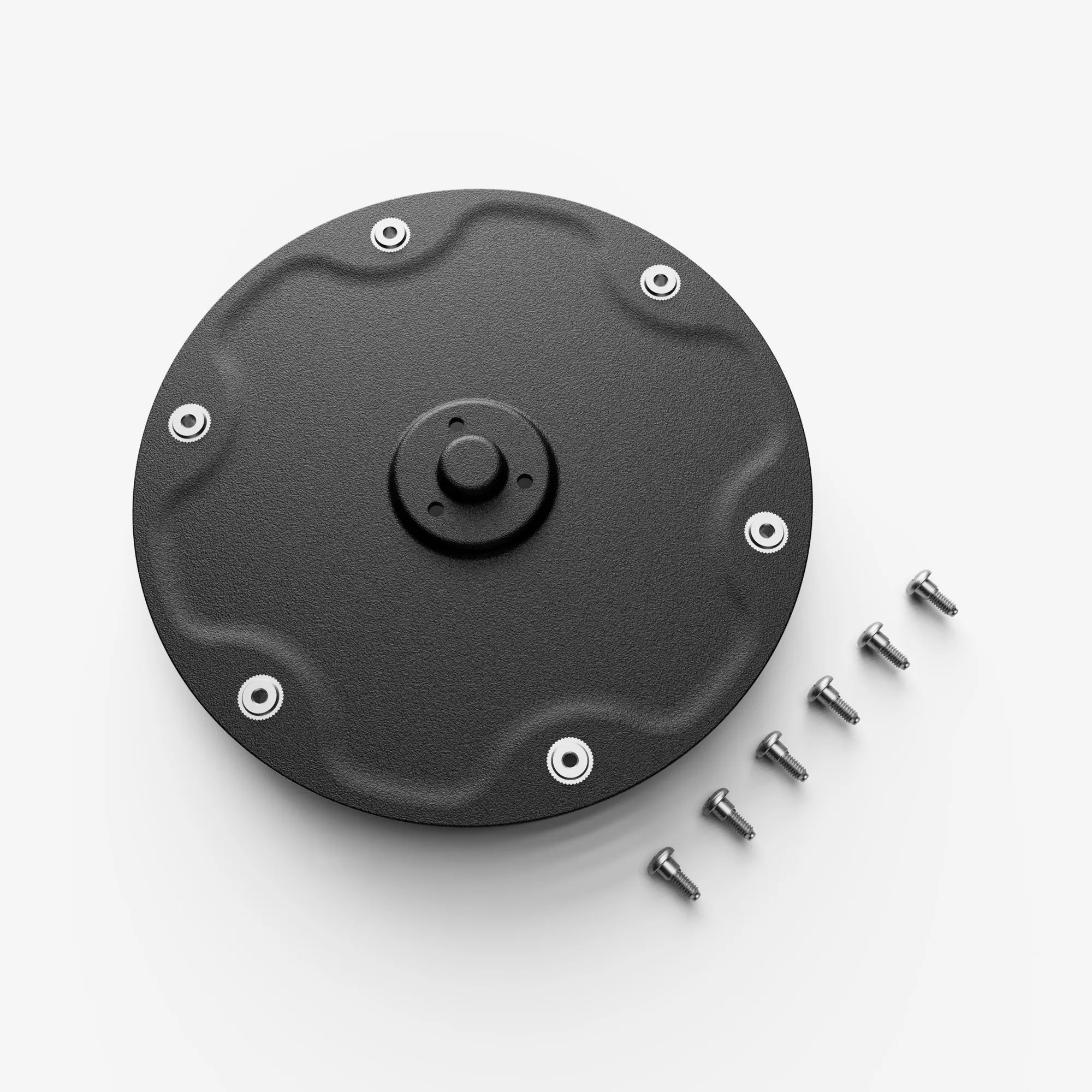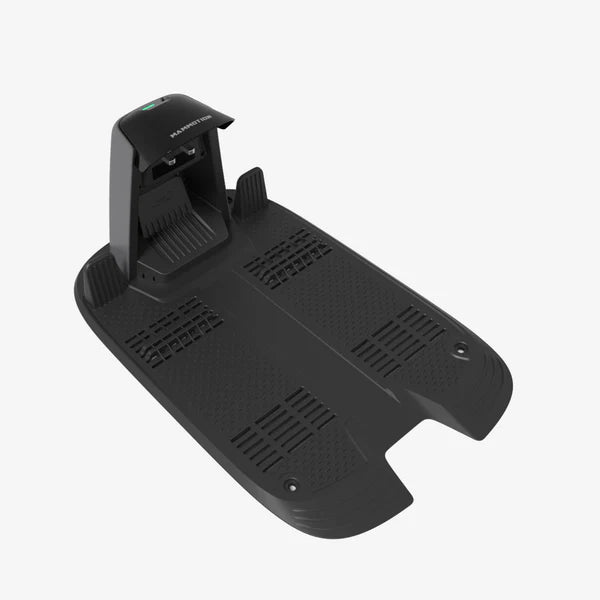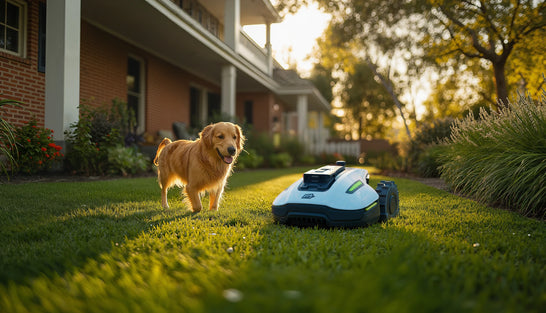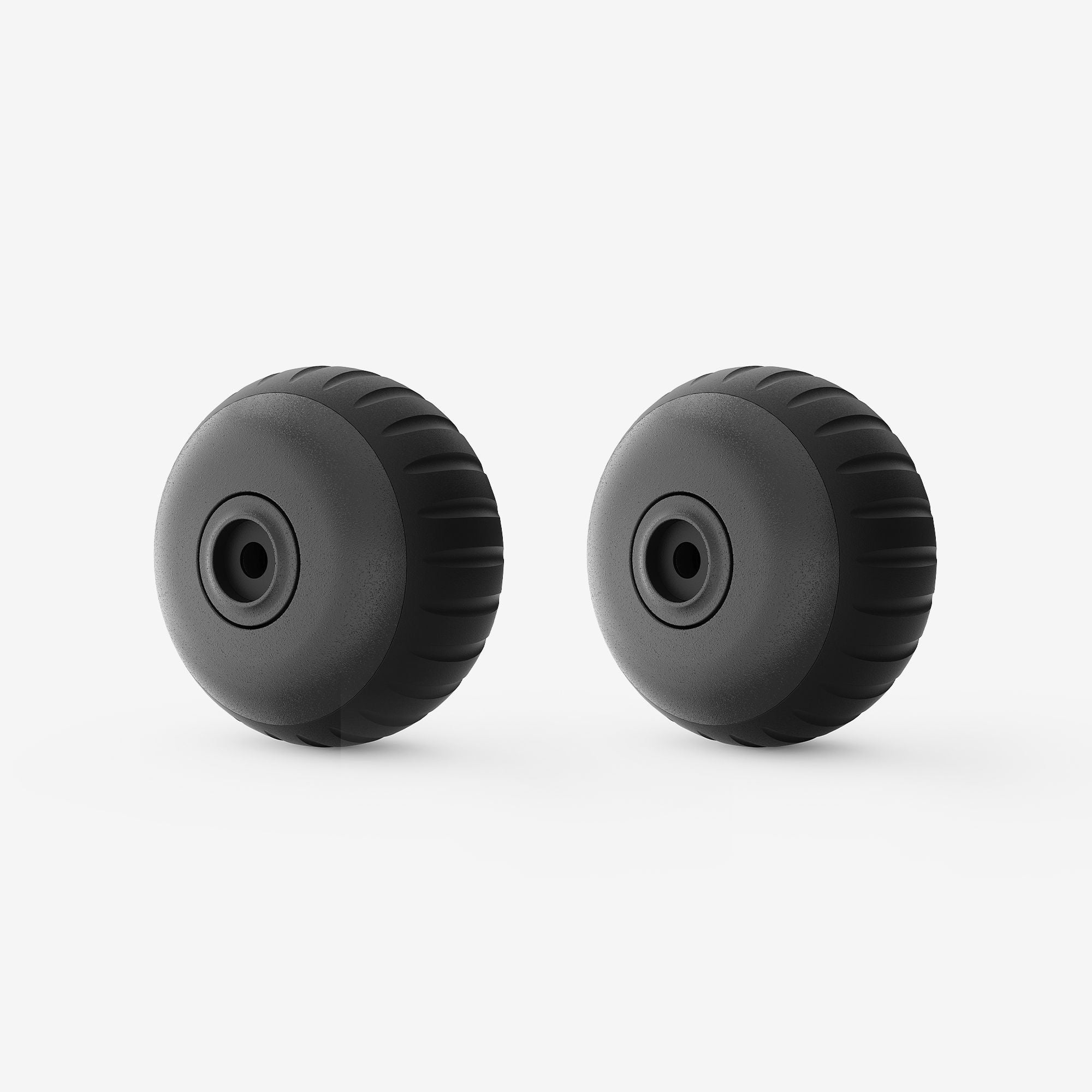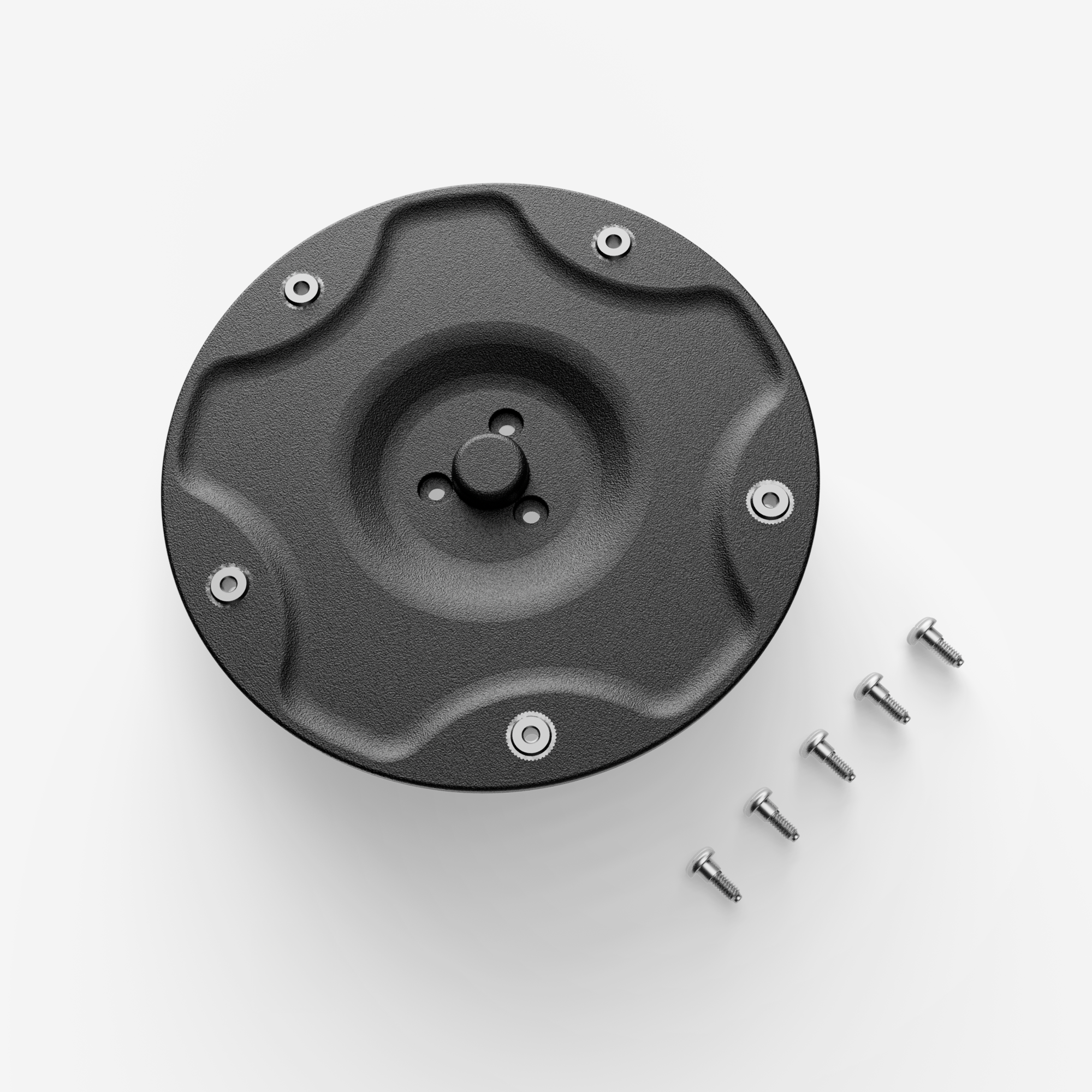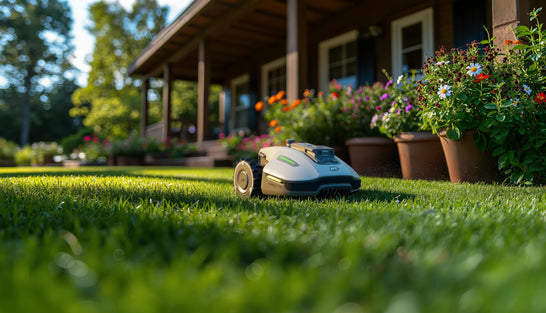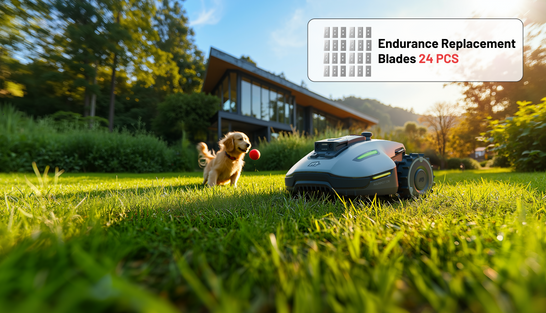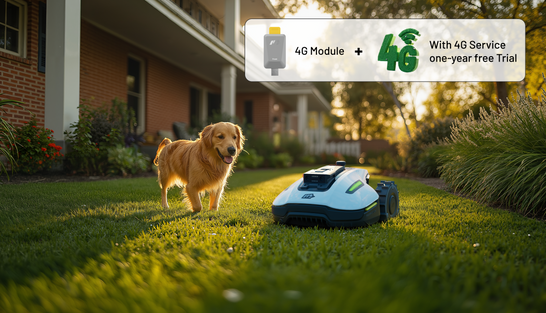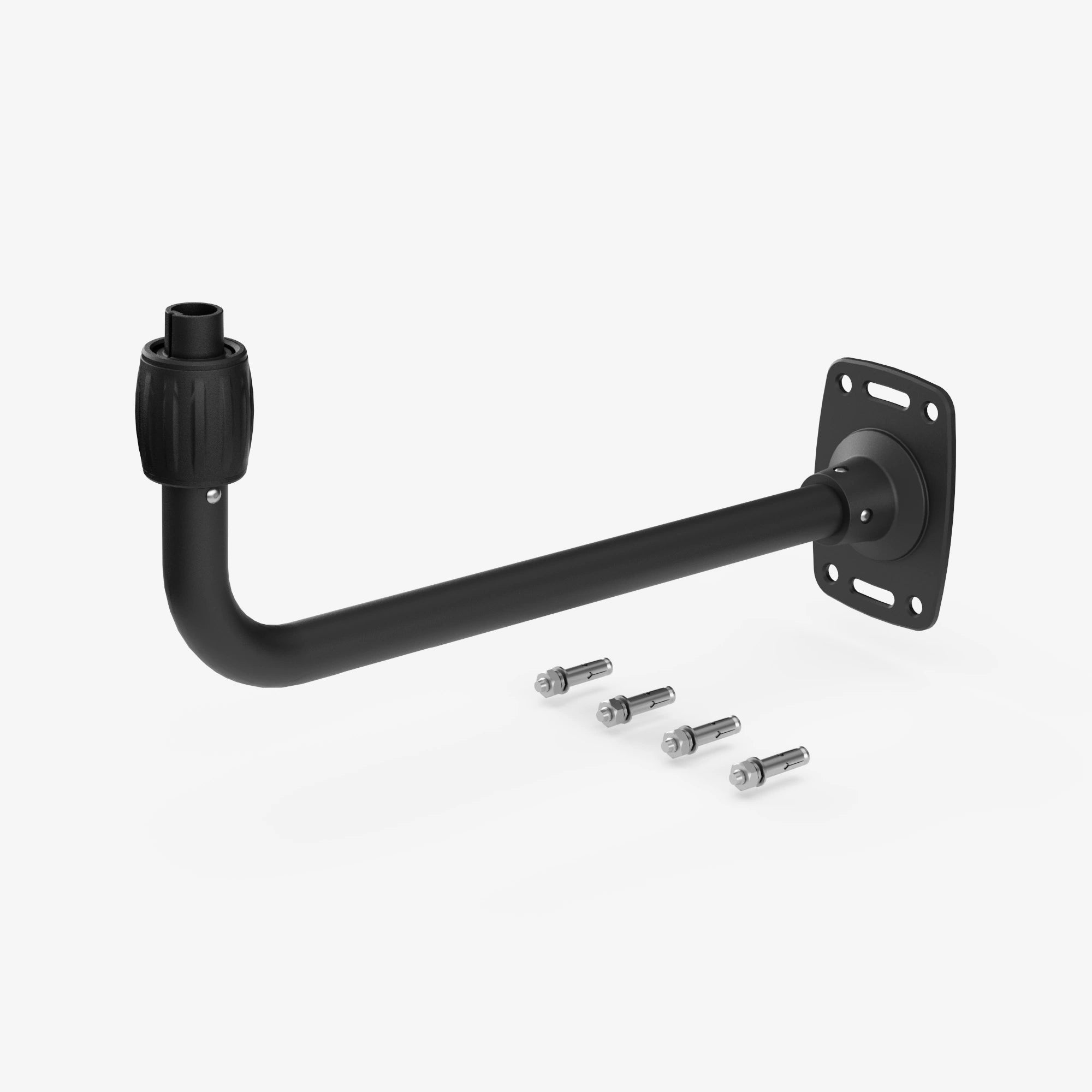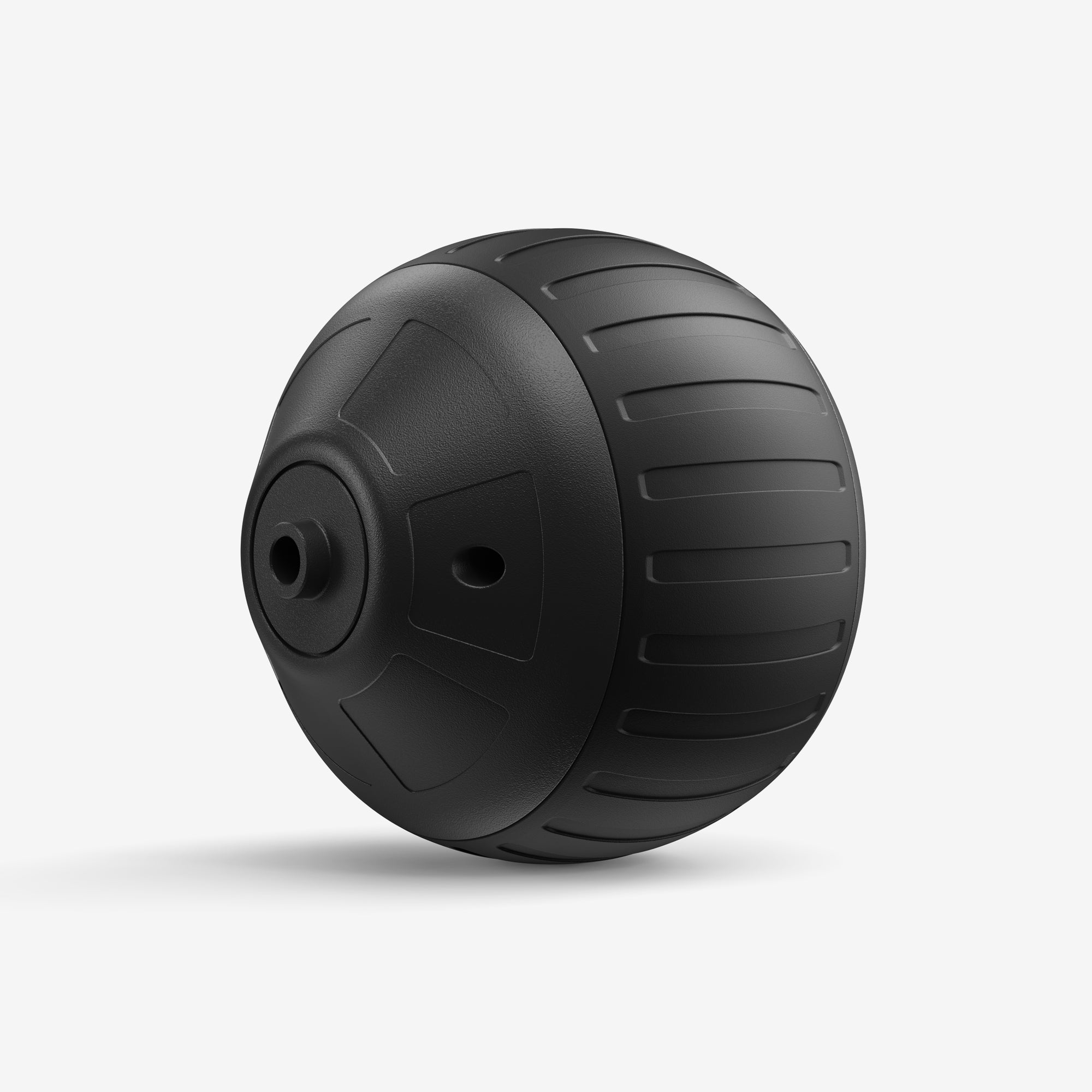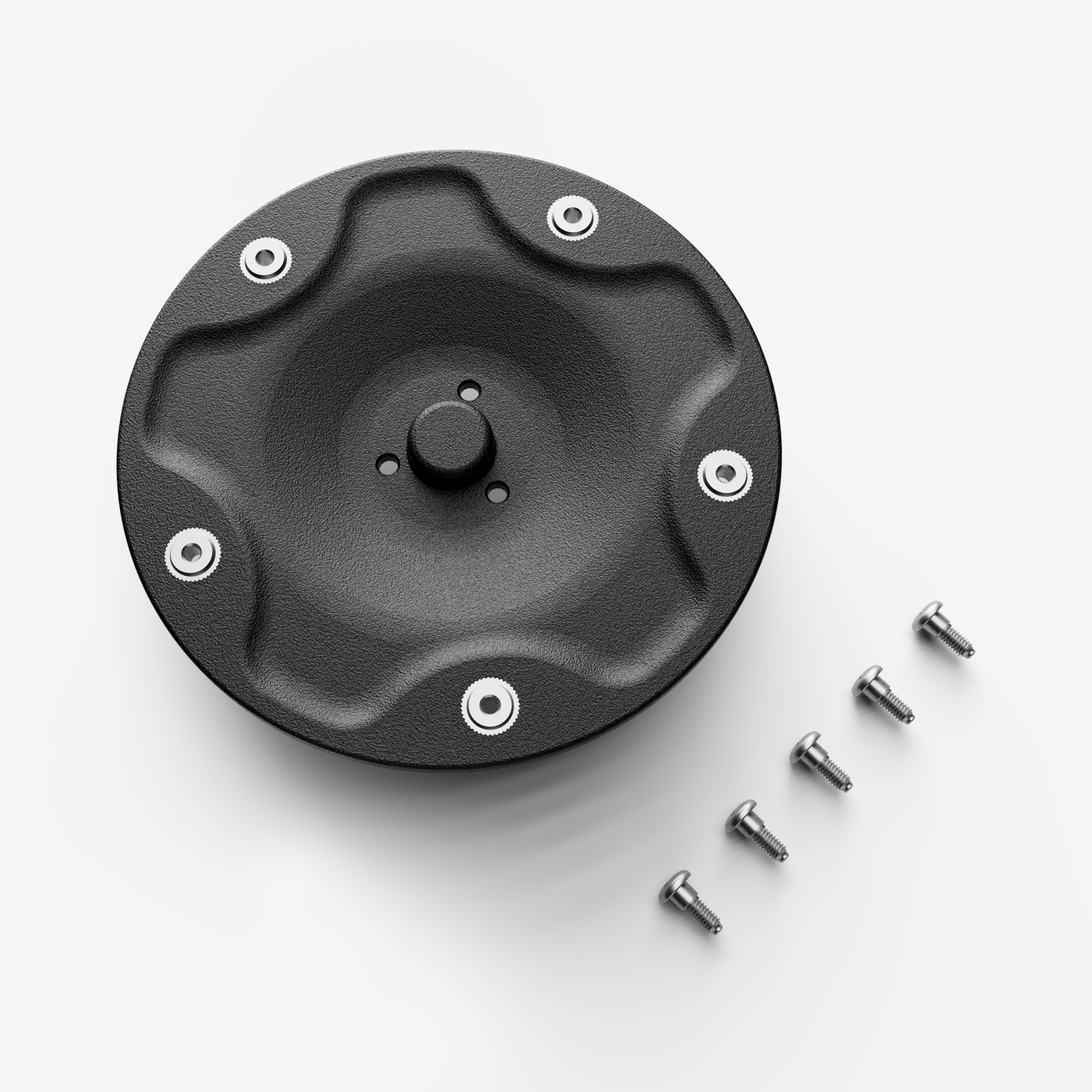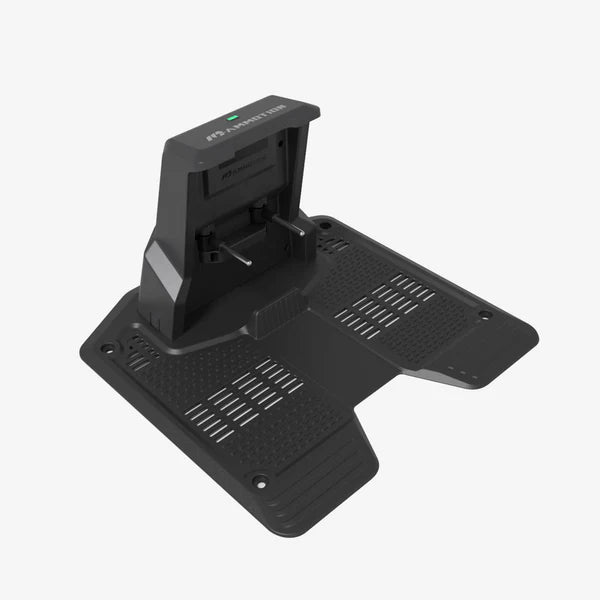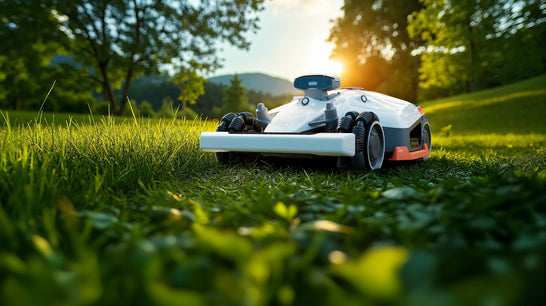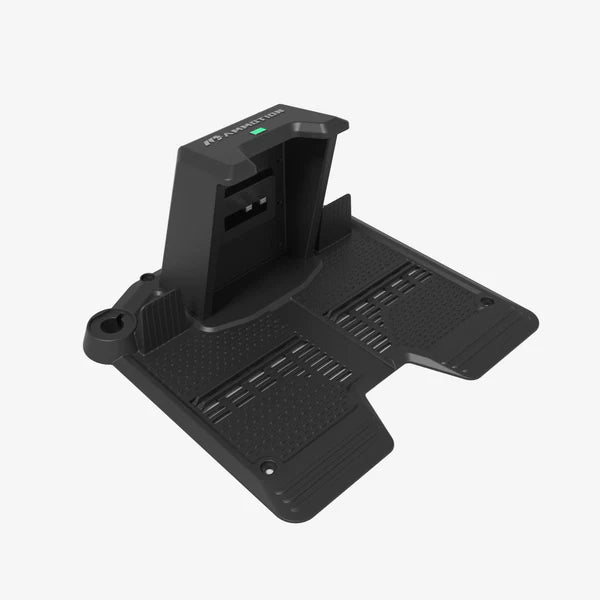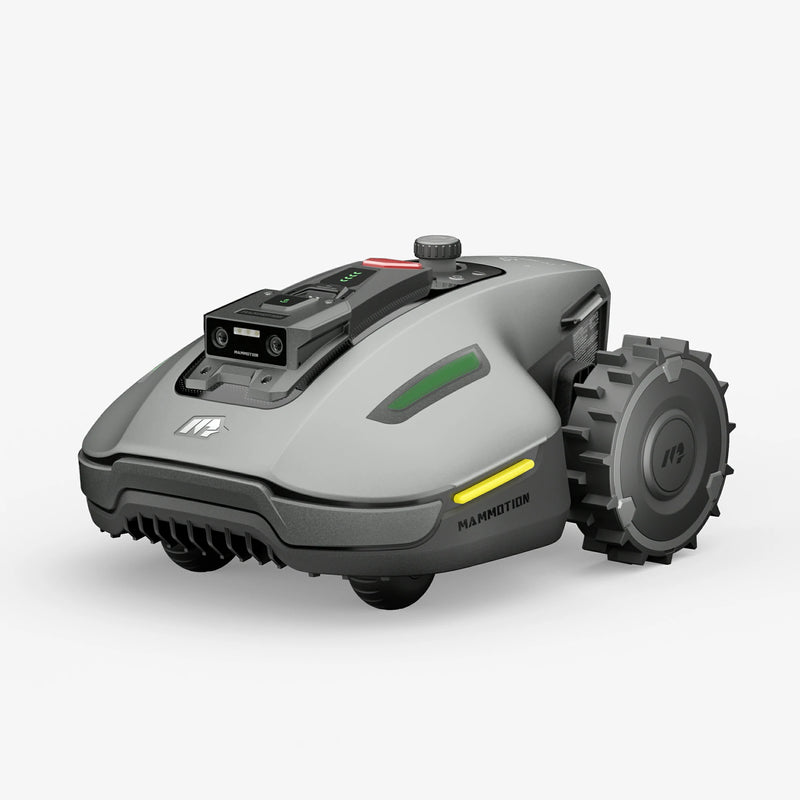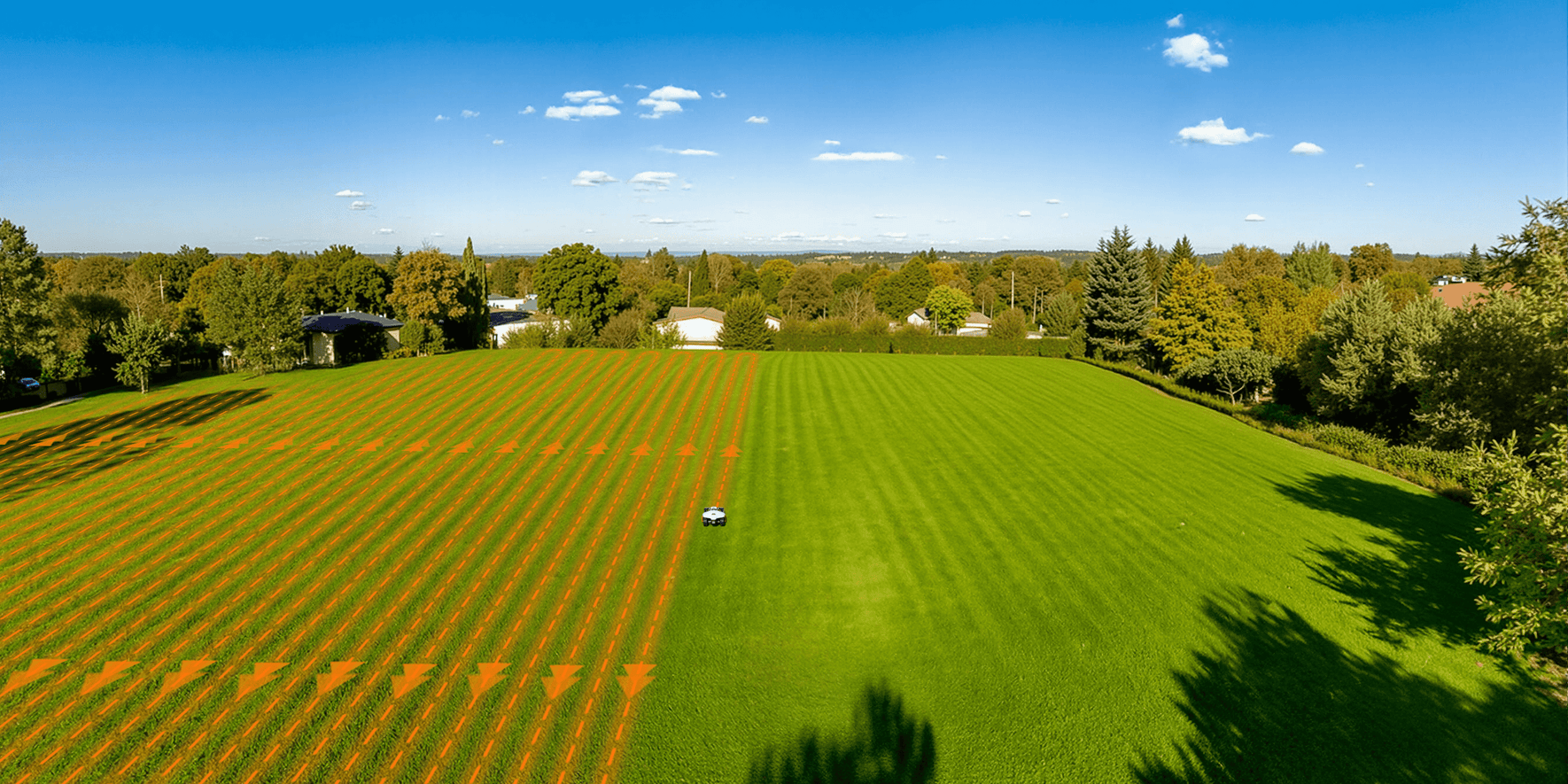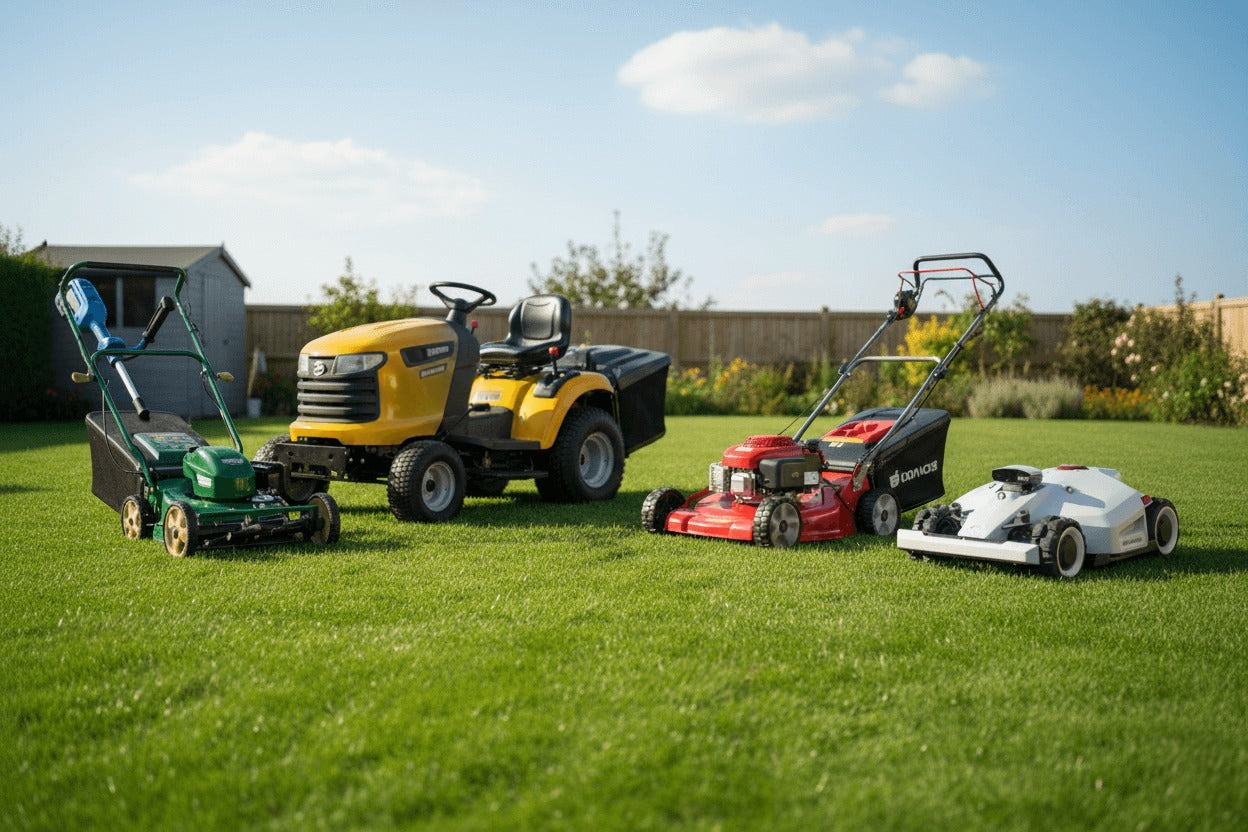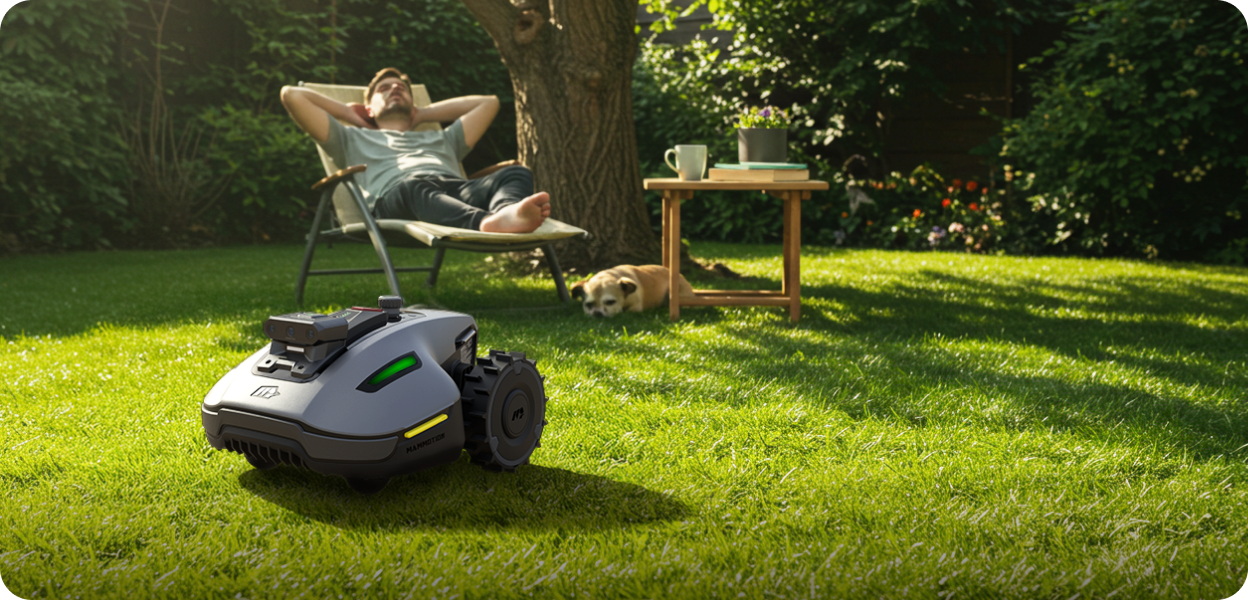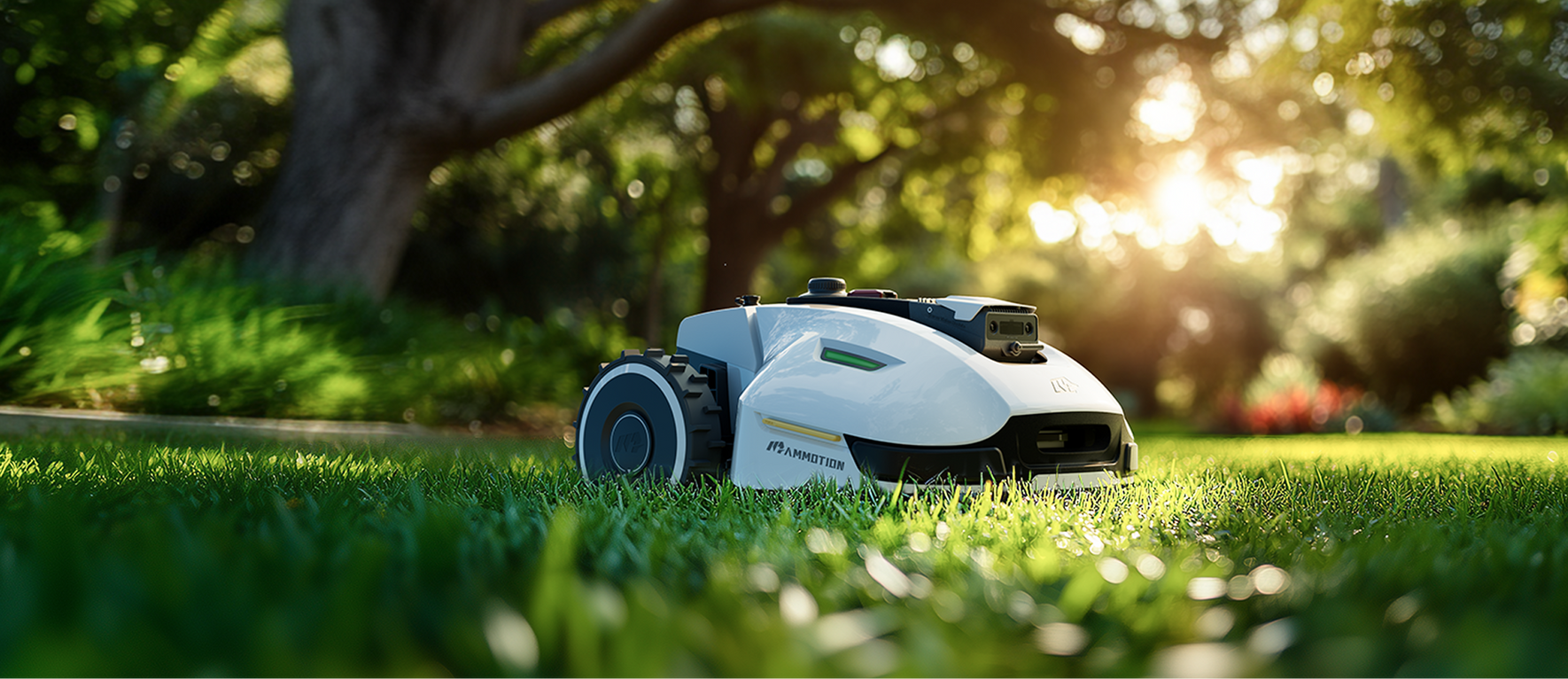Autonomous lawn mowers have come a long way in recent years — no longer just simple robots wandering aimlessly across flat lawns, they’re now powerful, intelligent machines capable of navigating complex terrain. One of the most important technical distinctions in these mowers is their drive system, which directly affects how well they handle slopes, obstacles, and uneven ground.
When comparing robot mowers, you’ll often see terms like 2WD (two‑wheel drive) and 4WD / AWD (all‑wheel drive). These are not just marketing buzzwords — the drive type you choose can drastically influence performance, efficiency, and suitability for your specific lawn.
In this article, we’ll take a deep dive into 2WD vs. 4WD robot mowers, exploring how they differ in traction, slope capability, battery life, cost, and real-world performance. By the end, you’ll be better equipped to decide which drive system is actually better for your yard — and whether that extra investment in a 4WD robot mower is worthwhile.
What Is a 2WD(Two-Wheel Drive) Robot Mower?
A 2WD (two-wheel drive) robot mower is the most common type of autonomous lawn mower on the market today. Its design is simple yet highly effective for typical residential lawns.
1. Basic Structure of 2WD Robot Mower
- Two powered wheels: Usually located at the rear, each driven by an independent electric motor. These wheels provide all the propulsion and steering by varying their speed in a differential drive manner.
- Front caster wheels: One or two small, free-rolling wheels at the front support the mower but do not contribute to propulsion.
- Cutting mechanism: The mower’s blades are mounted centrally or slightly forward, allowing for consistent grass trimming while the powered wheels handle movement.
This configuration allows the mower to turn in place by rotating the two drive wheels at different speeds or directions, which is particularly useful for navigating small or irregular lawns.
2. How the 2WD Robot Mower Works
- Differential drive: The left and right wheels operate independently. By varying wheel speeds, the mower can turn, reverse, or pivot.
- Navigation: Most 2WD mowers use boundary wires, GPS, or AI algorithms for path planning.
- Efficiency: With only two motors to power, 2WD mowers are generally more energy-efficient than 4WD models, which is an advantage for battery life.
3. Common 2WD Models
Some of the most widely used 2WD robot mowers include: Husqvarna Automower (Certain models), Segway, Worx Landroid Vision AI series, and Mammotion YUKA series.
Summary: 2WD mowers are excellent for flat to moderately uneven lawns, offer simple maintenance, and are the most cost-effective option for most residential users. Their limitation lies in steeper slopes or highly irregular terrain, where traction and stability may become a challenge.
What Is a 4WD / AWD Robot Mower?
A 4WD (four-wheel drive) or AWD (all-wheel drive) robot mower is a more advanced type of autonomous lawn mower. Unlike the more common 2WD models, 4WD mowers provide power to all four wheels, resulting in significantly improved traction, stability, and terrain capability.
1. Definition and Structure of 4WD Robot Mower
- Four powered wheels: Each of the four wheels is driven by its own motor (or paired motors), meaning all wheels contribute to propulsion.
- Independent control: With four drive motors (or motor pairs), the mower can distribute torque intelligently between front and rear wheels, improving grip on challenging surfaces.
- Chassis design: Often more robust or reinforced to handle rugged terrain, bumps, slopes, and uneven ground.
- Steering and mobility: Maintains differential-like steering, but with better traction and control thanks to the powered front axle.
2. Why 4WD / AWD Is Emerging for Robot Mowers
Several factors drive the trend toward 4WD in robotic mowers:
- Increased demand for all-terrain capability: As more users install robot mowers on sloped, hilly, or uneven lawns, they demand better traction and climbing ability.
- Larger and more complex properties: Larger yards, country properties, or commercial grounds (parks, golf courses) require machines that can handle varied terrain without getting stuck.
- Advanced autonomy + AI: Modern AWD robot mowers often combine drive power with advanced sensors (AI, cameras, lidar) to navigate complex environments intelligently.
- Premium performance: 4WD mowers offer superior stability, making them ideal for users who prioritize reliability, minimal manual intervention, and top-tier performance.
- Growing cost affordability: While 4WD systems are more expensive to produce, economies of scale and technological maturity are gradually reducing price barriers for high-end residential users.
3. Examples of 4WD / AWD Robot Mowers
One of the most notable examples of an AWD robot mower is Mammotion’s LUBA 2 AWD line. This model exemplifies how 4WD can be applied to outdoor robotics for serious mowing tasks.
2WD vs 4WD: Key Performance Differences
When choosing a robot mower, understanding the performance differences between 2WD (two-wheel drive) and 4WD / AWD (all-wheel drive) is essential. Each drive type offers distinct advantages and limitations, and the right choice depends on your lawn’s size, terrain, and user expectations.
Table: 2WD vs 4WD / AWD Robot Mower Comparison
|
Feature |
2WD (Two-Wheel Drive) |
4WD / AWD (Four-Wheel Drive / All-Wheel Drive) |
|
Drive Wheels |
2 powered wheels (usually rear) |
4 powered wheels (all wheels) |
|
Traction & Grip |
Good on flat, dry, firm lawns; may slip on wet or soft ground |
Excellent grip on all surfaces, maintains traction on slopes and rough terrain |
|
Slope Capability |
Moderate slopes (typically up to 15°–30°) |
Steep slopes (up to 30°–38°+), stable on inclines |
|
Terrain Handling |
Best for flat or gently rolling lawns; struggles with bumps and soft patches |
Handles rough, uneven, or hilly lawns; navigates obstacles like roots or rocks |
|
Battery Efficiency |
More efficient; fewer motors |
Slightly higher energy consumption due to four motors; optimized in premium models |
|
Maintenance |
Simple, fewer moving parts, lower maintenance |
More complex; additional motors and components increase maintenance needs |
|
Cost |
Generally more affordable; good for small-to-medium lawns |
Premium pricing; justified for large or challenging terrain |
|
Best For |
Flat, small-to-medium lawns, cost-conscious users |
Large, hilly, uneven lawns; users seeking premium performance and zero-intervention mowing |
1. Traction & Grip
2WD:
- Only two wheels provide propulsion, usually the rear wheels.
- Works well on dry, firm, and mostly flat lawns.
- On soft, wet, or muddy surfaces, the mower can slip, reducing efficiency and coverage.
4WD / AWD:
- All four wheels deliver power, resulting in stronger grip.
- Handles wet grass, soft soil, and uneven surfaces with minimal slipping.
- Distributes torque intelligently across wheels, maintaining traction on slopes or rough terrain.
Real-world note: A 4WD mower like Mammotion LUBA 2 AWD can maintain traction on inclines exceeding 30°–38°, whereas typical 2WD models may struggle above 30°.
2. Slope Capability
2WD:
- Capable of moderate slopes only.
- Risk of wheel spin or mower sliding increases with incline.
4WD / AWD:
- Superior climbing ability due to power delivered to all wheels.
- Can navigate steep or uneven lawns safely and reliably.
Example: Users with hillside properties often choose AWD models to prevent their mowers from stalling or sliding on slopes.
3. Terrain Handling
2WD:
- Best suited for flat or gently rolling lawns.
- Bumps, dips, and soft patches can occasionally cause the mower to get stuck or require manual intervention.
4WD / AWD:
- Adaptable to rough, uneven, or hilly terrain.
- Handles obstacles such as tree roots, rocks, and terraces more effectively.
- Maintains stability and mowing performance without frequent adjustments.
4. Battery Efficiency
2WD:
- Fewer motors mean lower power consumption.
- Longer runtime on a single charge, which is sufficient for small to medium-sized lawns.
4WD / AWD:
- Four powered wheels consume more energy.
- Battery life may be slightly shorter, but advanced AWD mowers often include efficient power distribution and intelligent navigation to optimize energy use.
5. Maintenance & Durability
2WD:
- Simpler design with fewer motors and moving parts.
- Lower maintenance costs and easier repairs.
4WD / AWD:
- More complex drive system with additional motors and gears.
- Requires slightly more maintenance, but rugged AWD models are built for durability on challenging terrains.
6. Cost Considerations
- 2WD models: Generally more affordable; great for small, flat lawns.
- 4WD / AWD models: Premium pricing justified by performance, traction, and terrain adaptability.
Summary: If your yard is small and relatively flat, 2WD provides excellent value. For large, hilly, or uneven lawns, AWD is often worth the investment.
2WD vs AWD: Which One Should You Choose? A Practical Guide
Choosing between a 2WD and 4WD / AWD robot mower depends entirely on your yard’s characteristics, your expectations, and how much you value hands-off performance. Below is a practical, scenario-based guide to help you decide which drive system fits your needs.
5.1 Choose a 2WD Robot Mower If…
You should consider a 2WD mower when:
✅ Your lawn is flat or mildly uneven
- 2WD models perform best on stable and relatively smooth surfaces. If your yard has only gentle slopes or small bumps, a 2WD mower will operate efficiently without getting stuck.
✅ Your yard is medium or small in size
- Two-wheel drive models are optimized for efficiency and long runtime, making them ideal for suburban lawns under ~0.25–0.5 acres (1,000–2,000 m²).
✅ You want a cost-effective solution
- 2WD robot mowers are significantly cheaper than AWD models, providing excellent performance for the price.
✅ You don’t need extreme all-terrain performance
- If your yard doesn’t include steep hills, deep ruts, loose soil, or complex landscaping, the extra traction of AWD isn’t necessary.
2. Choose a 4WD / AWD Robot Mower If…
A 4WD / AWD mower is the better choice when your property demands more robust performance.
🟩 Your lawn has steep slopes
- If you have hills steeper than 20°, AWD is almost essential.
- 4WD mowers maintain traction on slopes where 2WD models slip or stall.
🟩 Your terrain is rough or complex
- Choose AWD if your yard includes: Tree roots, Ditches or dips, Rocky areas, Uneven soil, Soft or muddy patches, Terraced or tiered landscaping
- 4WD mowers can climb, grip, and maneuver in conditions where 2WD units get stuck.
🟩 Your property is large
- Larger properties benefit from powerful all-terrain robots that can cover complex areas without manual intervention.
🟩 You want a “zero-intervention” experience
- AWD models are better at avoiding getting stuck, meaning less babysitting and fewer recovery missions.
3. Still Not Sure? Ask Yourself These 5 Questions
Here are five simple questions to determine your best fit:
1. Is my lawn more flat or hilly?
- Flat → 2WD
- Hilly → 4WD
2. Does my yard often get soft, muddy, or thick with grass?
- Yes → 4WD
- No → 2WD
3. Do I want the lowest-cost option, or maximum capability?
- Lowest cost → 2WD
- Maximum capability → 4WD
4. Do I have obstacles, bumps, tree roots, or uneven terrain?
- Yes → 4WD
- No → 2WD
5. Do I want a mower that never gets stuck, even in bad conditions?
- Yes → 4WD
- No → 2WD is fine
Conclusion
Choosing between a 2WD and 4WD / AWD robotic mower ultimately comes down to understanding your lawn. If your yard is flat, simple, and modest in size, a 2WD mower offers excellent value, efficient operation, and reliable performance for everyday residential use.
However, if you’re dealing with steep slopes, uneven or rugged terrain, soft soil, or a large and complex property, a 4WD / AWD robot mower delivers a level of traction, stability, and all-terrain confidence that a 2WD model simply can’t match. The additional power, better climbing capability, and reduced risk of getting stuck make AWD systems the clear choice for challenging environments.
As robot mowing technology continues to advance, drive systems will play an increasingly important role in performance expectations. Understanding the differences between 2WD and 4WD not only helps you choose the right model—it ensures your mower will operate smoothly, efficiently, and with minimal intervention for years to come.
Frequently Asked Questions
1. Which one is better, 4WD or 2WD?
Neither system is universally “better”—it depends on your lawn.
2WD is better for small, flat, and simple yards.
4WD / AWD is better for hills, uneven terrain, large properties, and users who want maximum stability.
If your lawn is sloped or rough, 4WD is the clear winner. For flat, suburban yards, 2WD is usually enough.
2. What are the disadvantages of a 2WD robot mower?
The main disadvantages of 2WD robot mowers include:
- Limited traction on wet, soft, or muddy ground
- Poor slope performance, typically maxing out at 15°–25°
- Higher chance of getting stuck on bumps, dips, or uneven areas
- Less stable on hilly or rugged lawns
For most simple yards, these limitations are not an issue—but for difficult terrain, they become noticeable.
3. What is the advantage of all-wheel-drive lawn mowers?
All-wheel-drive (AWD/4WD) lawn mowers offer:
- Superior traction on all surfaces
- Better climbing ability, ideal for steep slopes
- Improved stability on uneven terrain
- Less risk of stalling or getting stuck
- More consistent mowing performance in challenging conditions
AWD mowers are built for performance where 2WD models struggle.
4. Does 4WD give you more power?
Yes—4WD systems provide more usable power because all four wheels can deliver torque to the ground.
This improves:
- Climbing ability
- Acceleration
- Stability
- Control on slippery surfaces
While the motor itself may not always be larger, the ability to distribute power across multiple wheels results in significantly better real-world performance.
5. Should I buy a 2WD or 4WD robotic mower?
Buy a 2WD mower if:
- Your lawn is flat
- Your yard is small or medium-sized
- You want the most budget-friendly option
Buy a 4WD / AWD mower if:
- You have slopes or hills
- Your terrain is rough, bumpy, or soft
- You want a mower that won’t get stuck
- You prefer a premium, low-intervention mowing experience
Simple rule:
Flat lawn → 2WD
Hilly or complex lawn → 4WD





